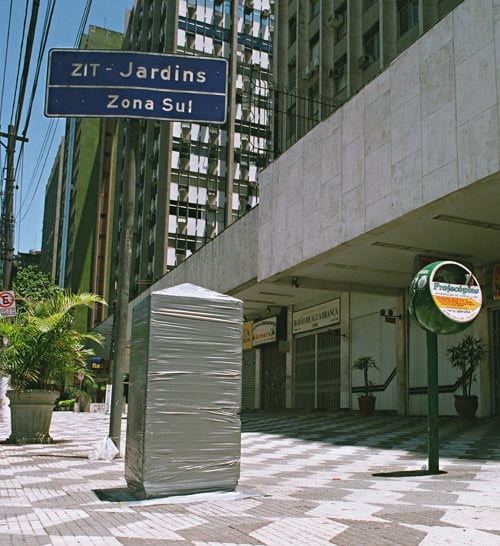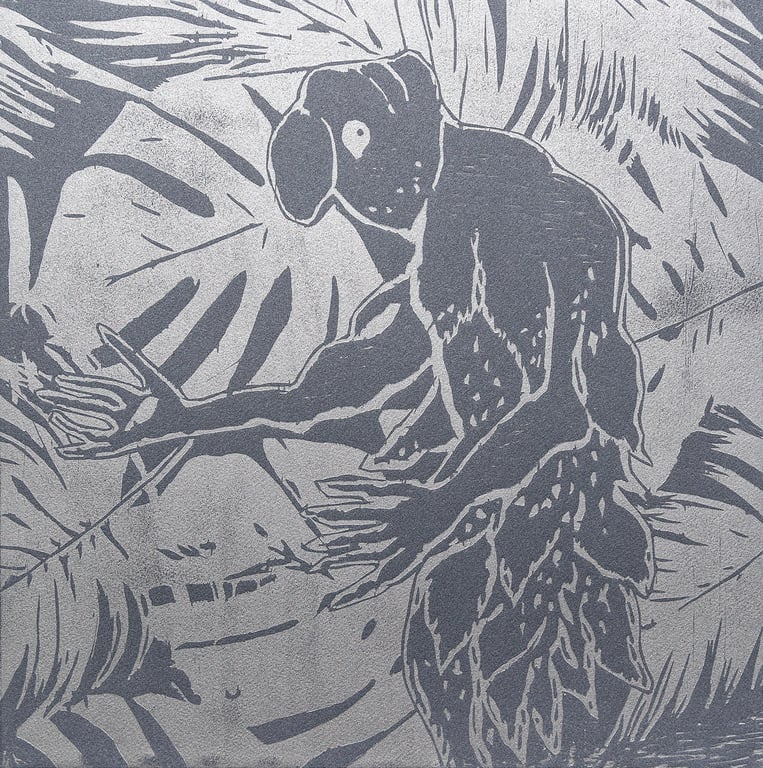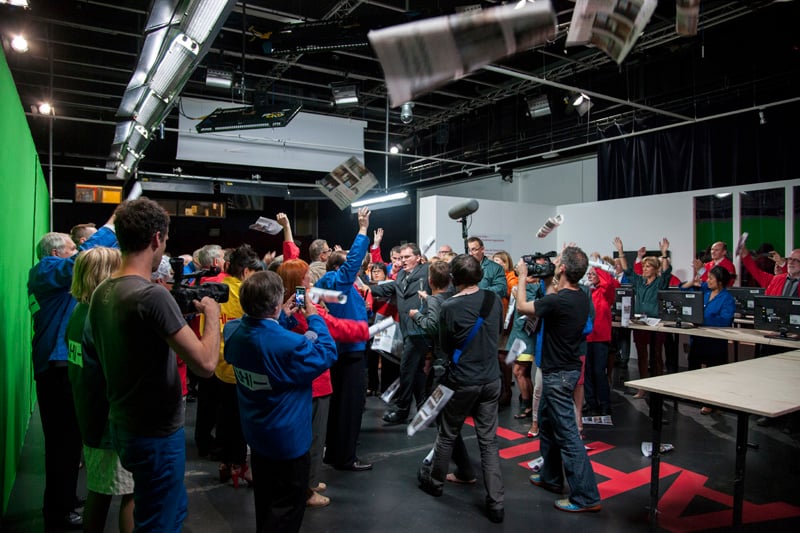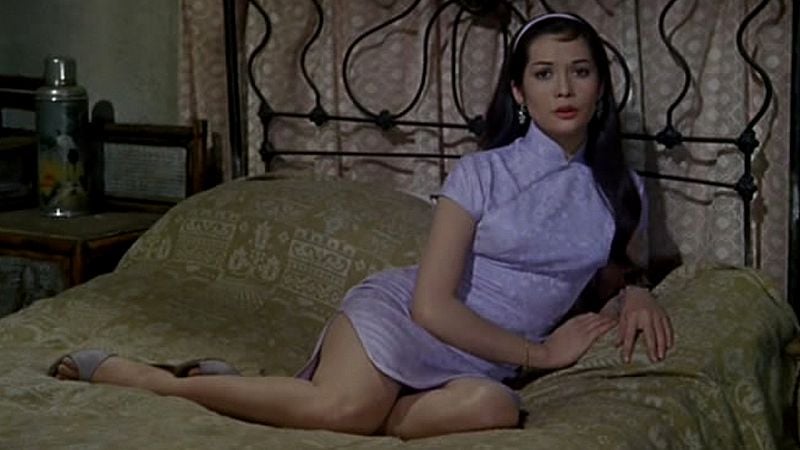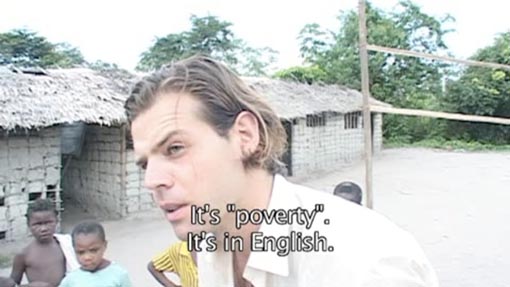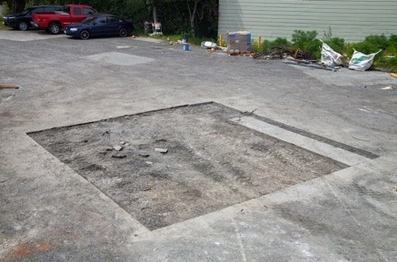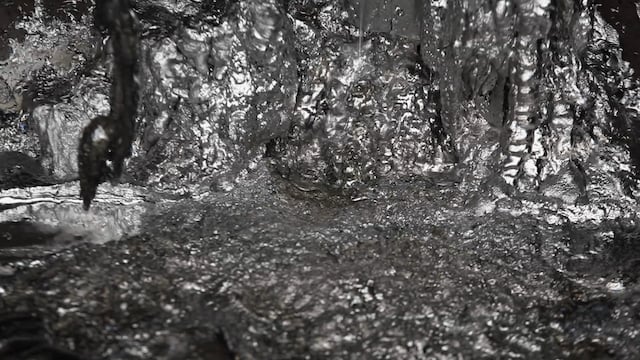
© » KADIST
Abraham Oghobase
This series of photographs is inspired by the artist’s travels to Jos, Nigeria. Having grown up in the urban environment of Lagos, Abraham Oghobase was struck by the tin-mining deposits and the man-made ponds and lakes that form a dominant part of the landscape in the city of Jos and its surroundings. While visually striking, the landscape also holds a complex history, excavated by the artist, who researched the prevalent mining of tin deposits that dates back to 1904 during the British colonial mineral exploration in the Northern Protectorate.

© » KADIST
Claudia Andujar
In 1980, with the construction of highways in Indigenous territories, an epidemic was brought to the Yanomami region. As the Yanomami do not have first names, it was necessary to give them numbers to indicate that they had already been vaccinated and identify each one for their medical records. From this series of events, Claudia Andujar’s Marcados series was born: what was supposed to be a mere photographic record, for organizational purposes, ended up raising a big question about the “labels” given to people in the construction of societies.

© » KADIST
Birender Kumar Yadav
Birender Kumar Yadav comes from Dhanbad, India, a city built on its proximity of iron ore and coal and once forested and inhabited by Indigenous people who compose the Gondwana. The forests were felled and immigrants from northern Bihar and South India were brought to exploit the mineral resources. The Indigenous people were then dispersed to live nomadically, engaging themselves as seasonal workers in farms and industries.

© » KADIST
Abraham Oghobase
This series of photographs is inspired by the artist’s travels to Jos, Nigeria. Having grown up in the urban environment of Lagos, Abraham Oghobase was struck by the tin-mining deposits and the man-made ponds and lakes that form a dominant part of the landscape in the city of Jos and its surroundings. While visually striking, the landscape also holds a complex history, excavated by the artist, who researched the prevalent mining of tin deposits that dates back to 1904 during the British colonial mineral exploration in the Northern Protectorate.

© » KADIST
Santiago Yahuarcani
Drawing & Print (Drawing & Print)
The series Castigos del caucho by Santiago Yahuarcani originates in the oral memory transmitted by the artist’s grandfather, who was a survivor of the Putumayo genocide where thousands of Indigenous people were annihilated and enslaved to extract rubber from the Amazon forest between 1879 and 1912. Yahuarcani’s complex narrative paintings on tree bark highlight a long history of colonial violence against the Uitoto and other Indigenous communities. They also show the destruction of the rainforest under Western models of extraction, privatization, and development.

© » KADIST
Abraham Oghobase
This series of photographs is inspired by the artist’s travels to Jos, Nigeria. Having grown up in the urban environment of Lagos, Abraham Oghobase was struck by the tin-mining deposits and the man-made ponds and lakes that form a dominant part of the landscape in the city of Jos and its surroundings. While visually striking, the landscape also holds a complex history, excavated by the artist, who researched the prevalent mining of tin deposits that dates back to 1904 during the British colonial mineral exploration in the Northern Protectorate.

© » KADIST
Claudia Andujar
In 1980, with the construction of highways in Indigenous territories, an epidemic was brought to the Yanomami region. As the Yanomami do not have first names, it was necessary to give them numbers to indicate that they had already been vaccinated and identify each one for their medical records. From this series of events, Claudia Andujar’s Marcados series was born: what was supposed to be a mere photographic record, for organizational purposes, ended up raising a big question about the “labels” given to people in the construction of societies.

© » KADIST
Miguel and Natalia Fernández de Castro and Mendoza
The Absolute Restoration of All Things is a collaboration by artist Miguel Fernández de Castro and anthropologist Natalia Mendoza. For this project, Fernández de Castro and Mendoza researched the 2014 court case that shut down Penmont Mining’s operations in the middle of the Sonoran desert. The lawsuit was brought to court by the “ejidatarios” (communal land holders) of El Bajío, Sonora, who claimed that their territory was illegally occupied and exploited, causing an irrevocable environmental impact on their land.

© » KADIST
Birender Kumar Yadav
Drawing & Print (Drawing & Print)
Birender Kumar Yadav comes from Dhanbad, India, a city built on its proximity of iron ore and coal and once forested and inhabited by Indigenous people who compose the Gondwana. The forests were felled and immigrants from northern Bihar and South India were brought to exploit the mineral resources. The Indigenous people were then dispersed to live nomadically, engaging themselves as seasonal workers in farms and industries.

© » KADIST
Claudia Andujar
In 1980, with the construction of highways in Indigenous territories, an epidemic was brought to the Yanomami region. As the Yanomami do not have first names, it was necessary to give them numbers to indicate that they had already been vaccinated and identify each one for their medical records. From this series of events, Claudia Andujar’s Marcados series was born: what was supposed to be a mere photographic record, for organizational purposes, ended up raising a big question about the “labels” given to people in the construction of societies.

© » KADIST
Edgardo Aragón
Drawing & Print (Drawing & Print)
Mesoamericana (Economic activities) is part of a larger project titled Mesoamerica: The Hurricane Effect, which includes a video as well as series of hand drawn maps -based on historical cartography- that examine the effects of foreign power in Mexico today. Mesoamerica was home to a rich civilization that emerged around 10,000 years BC and out of which grew the rich Maya, Aztec and Zapotec cultures, among many others. These cultures were destroyed by the Spanish, who arrived in the 15th and 16th centuries.

© » KADIST
I-Hsuen Chen
Drawing & Print (Drawing & Print)
Part of the series Still Life Analysis II: The Island , the two photographs The Objects under the Civic Boulevard and A Yellow Blanket on a Wooden Pallet feature household objects of vagrants living beneath the Taipei’s Civic Boulevard expressway. Such objects include trash, unidentified discarded objects, and plants. For the artist, the underside of Civic Boulevard resembles a subtropical island with its artificial stones and potted plants decor.

© » KADIST
Khvay Samnang
The video Rubber Man continues exploring issues related to land use, also noticeable in his Untitled series (2011). More specifically, Rubber Man addresses the French colonial legacy of land use for the exploitation of rubber –today exploited by multiple forces such as individuals, governments, multinationals and international banks– and its effects on Cambodia’s indigenous forests and culture today. The video takes place in Ratanakiri, an area in northeastern Cambodia increasingly known in local and international news for land grabs and protests, and where the artist frequently traveled to over two years.

© » KADIST
Abraham Oghobase
This series of photographs is inspired by the artist’s travels to Jos, Nigeria. Having grown up in the urban environment of Lagos, Abraham Oghobase was struck by the tin-mining deposits and the man-made ponds and lakes that form a dominant part of the landscape in the city of Jos and its surroundings. While visually striking, the landscape also holds a complex history, excavated by the artist, who researched the prevalent mining of tin deposits that dates back to 1904 during the British colonial mineral exploration in the Northern Protectorate.

© » KADIST
Naomi Rincón-Gallardo
Resiliencia Tlacuache / Opossum Resilience by Naomi Ricón Gallardo is a fabulation in which four characters find themselves in temporalities that overlap Mesoamerican narratives about the creation of the world with the contemporary time of accumulation by dispossession. Together, they summon the powers of fire and joy so that the opossum conjures its ability to play dead and resuscitate in extractivist areas. The work reanimates Mesoamerican fables about time and territory where the four characters—Hill, Opossum, 9 Reed (Mixtec cave deity), and Agave/Mayahuel (Moon and Pulque Goddess)—create a space for conceptual intervention through performative action and popular music.

© » KADIST
Hong-Kai Wang
The video Music While We Work (2011) is the first part/work of a long-term research project started in 2010. The project revolves around and beyond the history of sugar in the small town Huwei in central Taiwan (the artist’s hometown). The town was nicknamed as the “Capital of Sugar” during the Japanese colonial ruling (1895-1945) of Taiwan.

© » KADIST
Apostolos Georgiou
Untitled (2016) is characteristic of the artist’s practice. Apostolos Georgiou invites us into a scene of cinematic tension. In the foreground, a man is kneeling with his hands on his head.
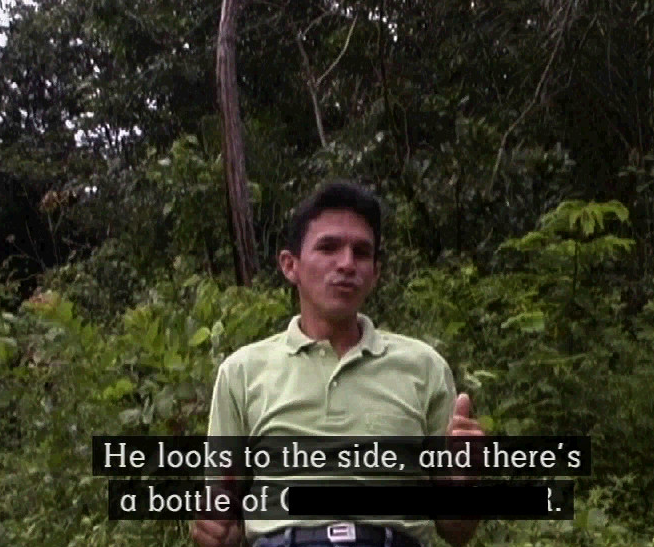
© » KADIST
SUPERFLEX
SUPERFLEX makes a distinction between two types of projects with different temporalities: works that occur during an exhibition and other that evolved over several years. Thus, since 1997, they are working on a biogas system (SUPERGAS), first installed in Kenya, then Thailand and today in Mexico, perfecting at each stage the means of production, utilization and commercialization of this system. GUARANA POWER is one of these sustainable projects that create a real economy.

© » KADIST
Nohemí Pérez
Drawing & Print (Drawing & Print)
A rich and isolated region, El Catatumbo is located near the border with Venezuela. Different groups fight over its gold and oil, while narcotic plantations have exploited the region over the years, provoking massacres, displacement, and migrations amongst its native populations. Nohemí Pérez’s skillful and eloquent watercolors, titled Apuntes para panorama Catatumbo , testifies to this aspect of Colombia’s history that has been veiled by other equally pressing political issues.

© » KADIST
Carolina Caycedo
YUMA o la tierra de los amigos (YUMA, or the Land of Friends) by Carolina Caycedo is a large mural containing a series of satellite photographs mounted on acrylic. The mural contrasts and mixes multiple layers of these satellite images capturing the progressive devastation of the El Quimbo dam on the Yuma river (Magdalena), in the Department of Huila. The project was originally produced for the 8th Berlin Biennale, and developed out of the artist’s research into waterways, their political and cultural impact, and their historical development.

© » KADIST
Prabhakar Pachpute
Calling attention to campaigns for land rights, survival, and sovereignty, Prabhakar Pachpute’s recent works consider how farmers in India use their bodies in performative ways during acts of protest. The oil painting Inclined uncertainties depicts a grotto-like city atop a boat carried by headless human bodies. The waterless boat navigates through a desolate landscape, propelled forward by the faceless humans, who appear to be holding the cumbersome structure together.

© » KADIST
Sky Hopinka
Dislocation Blues by Sky Hopinka is a portrait of the 2016 Standing Rock protests against the Dakota Access Pipeline in South Dakota. Working against grand narratives and myth-making, Hopinka attempts to provide a clear look towards the participants of the protest movement and the protectors of the water – their testimonies, reflections, and histories. In the film, Cleo Keahna tells about the everyday life of the camp and its difficulties and Terry Running Wild shares his dreams for the future.

© » KADIST
Antonio Vega Macotela
The mines at Potosí are both the site and subject of this work, also titled Potosí, by Antonio Vega Macotela. Historically, these mines bankrolled Spanish imperial coinage; the Spanish began excavating the site for silver in 1545 in what is now Bolivia. The mines themselves are situated at great altitude in the Andes, and are inhospitable to animal labor.
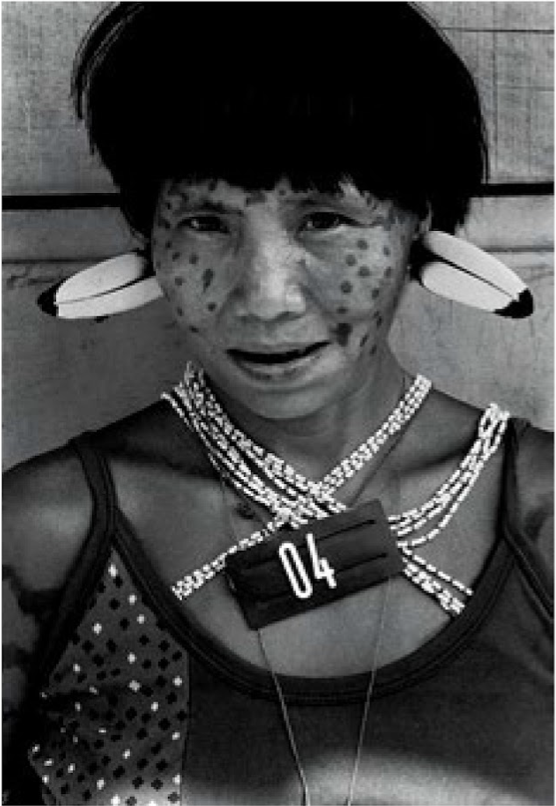
© » KADIST
Claudia Andujar
In 1980, with the construction of highways in Indigenous territories, an epidemic was brought to the Yanomami region. As the Yanomami do not have first names, it was necessary to give them numbers to indicate that they had already been vaccinated and identify each one for their medical records. From this series of events, Claudia Andujar’s Marcados series was born: what was supposed to be a mere photographic record, for organizational purposes, ended up raising a big question about the “labels” given to people in the construction of societies.

© » KADIST
Cheikh Ndiaye
Adjamé, Charbon reflects on both global environmental discourses and domestic impacts of the use and trade of coal. Adjamé is one of ten urban communes of the city of Abidjan, the economic capital and city with the largest French-speaking populous in the Côte d’Ivoire. Employing vibrant colors to contrast the plastic jerrycans, children toys and clothing strewn randomly throughout the shanty settlement with the darkness of coal is a challenging articulation of the image of progress and its environmental consequences today.

© » KADIST
María Buenaventura
The Territory is not for sale is a process of reflection and research with people, thinkers and community leaders from Usme, a rural part of Bogotá on the tenuous verge of becoming urban. As an art object and installation, it comprises multiple stacks of paper each containing the decrees of land expropriation from many different peasant farmers who are being forced to sell their lots of land back to the government. Usme lies at the southern urban-rural border strategically located next to the Páramo de Sumapaz, an enormous neo-tropical tundra ecosystem and water reserve.

© » KADIST
Corey McCorkle
Corey McCorkle’s 2016 installation Pendulum is developed around the Cavendish family and their role in importing bananas to Europe. Cavendish bananas were named after William Cavendish, the 6th Duke of Devonshire. In 1834, Cavendish received a shipment of bananas from Mauritius, and developed these bananas in the greenhouses of Chatsworth House with his gardener Sir Joseph Paxton, and were later given to missionary John Williams to take to Samoa.
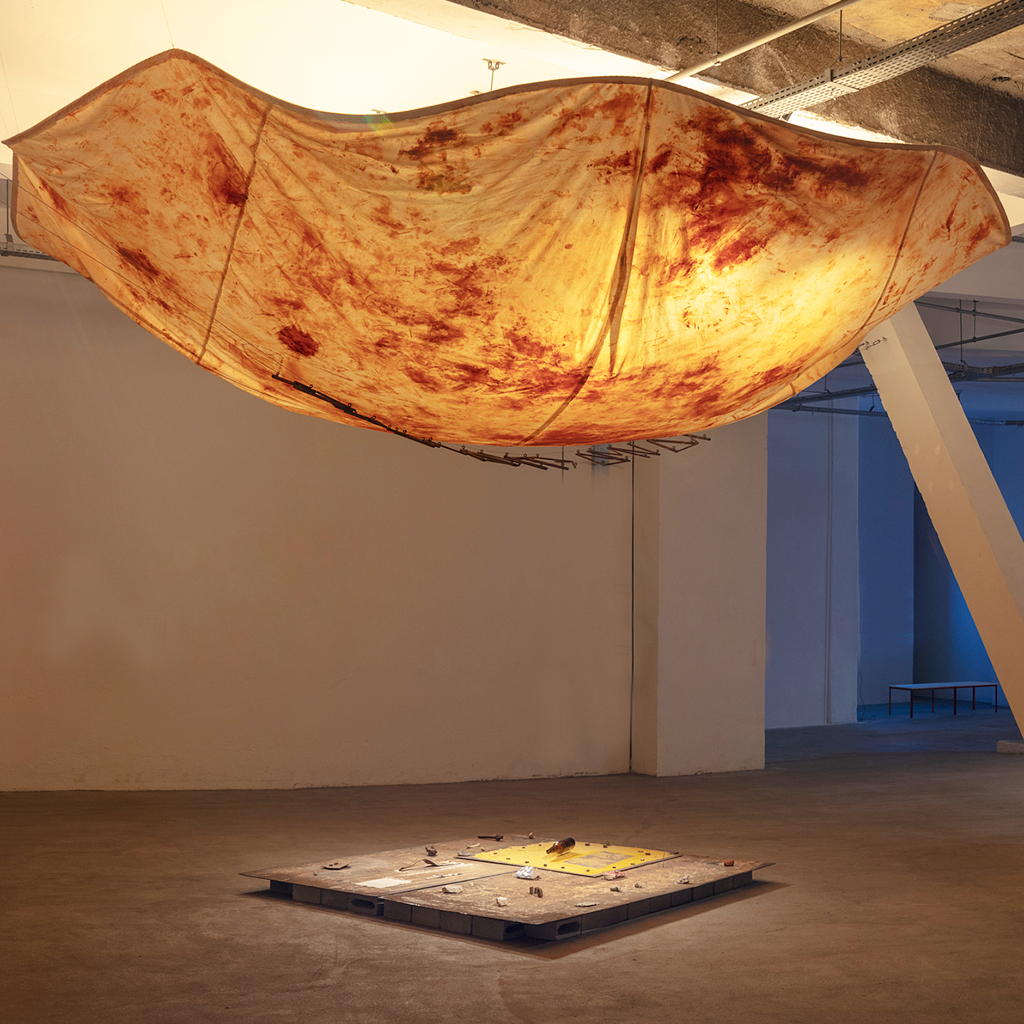
© » KADIST
arquivo mangue
o que diriam as pedras a marte? [What would the stones say to Mars?] is a sculptural work consisting of two parts by arquivo mangue.

© » KADIST
Paloma Contreras Lomas
Paloma Contreras Lomas has frequently used animals as metaphors in her work. This work’s title, Cimarrón , is the Spanish word for an untamed animal, the wild vegetation that grows in the open, or a runaway slave. Cimarrón is part of a larger series in which the artist turned scaled-up Mexican hats into meticulously hallucinatory landscapes.

© » KADIST
Rodrigo Braga
Braga’s video work Provisão (2009) opens with a still shot of a clearing in a forest, shoots of grass emerging from a muddy brown patch of seemingly dry and barren earth. As the camera fades to black, the viewer hears the repeated sound of a shovel striking dirt. The camera fades back to the clearing and zooms in on a shirtless man digging up the ground.
Abraham Oghobase
Abraham Onoriode Oghobase’s artistic practice explores identity in relation to socio-economic and historic geographies...
Claudia Andujar
Claudia Andujar was born in Switzerland in 1931, and then moved to Oradea, on the border between Romania and Hungary, where her paternal family, of Jewish origin, lived...
Birender Kumar Yadav
Birender Kumar Yadav is a multi-disciplinary artist who experiments with various media including painting, sculpture, photography, installation, etching, found and man-made objects, as well as live documentary...
Corey McCorkle
Described as a ‘spatial interventionist’, Corey McCorkle is a New York-based artist and trained architect, working in photography, architectural interventions, sculpture, installations, and films...
Michelle and Noel Keserwany
Michelle and Noël Keserwany compose and perform their own songs, as well as contribute to the illustrations and animations featured in the videos they produced...
Khvay Samnang
Khvay Samnang’s work critically examines the interlocking nature of ritual and politics, the humanitarian and ecological impacts of globalization, colonialism and migration, and the cultural-material histories of exchange that have shaped the Southeast Asia region...
Elena Tejada-Herrera
Elena Tejada-Herrera is a key figure at the intersection of feminist, performance, and technological art in Peru...
Antonio Vega Macotela
Antonio Vega Macotela’s multidisciplinary practice is centered around site-specificity, and often engages marginalized communities such as prison inmates, miners, Indigenous communities, and hackers...
Danielle Dean
Danielle Dean creates videos that use appropriated language from archives of advertisements, political speeches, newscasts, and pop culture to create dialogues to investigate capitalism, post-colonialism, and patriarchy...
Carolina Caycedo
Carolina Caycedo’s work triumphs environmental justice through demonstrations of resistance and solidarity...
Duane Linklater
Duane Linklater addresses issues of cultural loss and recovery, as well as appropriation and authorship articulated through sculpture, installation, photography, film, and video...
Clarissa Tossin
- location: Los Angeles, California
- year born: 1973
- gender: female
- nationality: Brazilian
- home town: Porto Alegre, Brazil
Apostolos Georgiou
Inescapably political, Apostolos Georgiou’s paintings are realized by bold and mastered brush strokes...
Robert Zhao Renhui
Robert Zhao Renhui’s multimedia practice questions fact-based presentations of ecological conservation and reveals the manner in which documentary, journalistic, and scientific reports sensationalize nature in order to elicit viewer sympathy...
Minerva Cuevas
- location: Mexico City, Mexico
- year born: 1975
- gender: female
- nationality: Mexican
- home town: Mexico City, Mexico
Santiago Yahuarcani
Santiago Yahuarcani belongs to the Aimen+ (White Heron) clan of the Uitoto people of the northern Amazon...
SUPERFLEX
SUPERFLEX work on a number of projects linked to their avowed interest in political and social engagement on a local scale...
Li Xiaofei
Li Xiaofei initiated Assembly Line in 2010, an ongoing project that records industrialized social change not only China, but as it occurs internationally...
Paloma Contreras Lomas
A writer and an artist, Paloma Contreras Lomas has developed a practice in which literature and fiction play a major role, allowing her to address a series of topics regarding race and class that are rarely broached by a traditional Mexican society...
Hong-Kai Wang
Wang is an artist working primarily with sound...
Maryanto
Maryanto is an artist with a background in printmaking whose research-oriented practice is deeply concerned with ecological footprints and actions of humanity...
Cheikh Ndiaye
The work of Cheikh N’Diaye (b...
Julio Cesar Morales
- location: San Francisco, California
- year born: 1966
- gender: male
- nationality: Mexican
- home town: Tijuana, Mexico
Sky Hopinka
Sky Hopinka is from the Ho-Chunk Nation/Pechanga Band of Luiseño Indians...
Cian Dayrit
Cian Dayrit is a Filipino multimedia artist...
I-Hsuen Chen
I-Hsuen Chen started focusing on visual arts in the late 2000s after working as a professional opera and choir singer in Taiwan...
arquivo mangue
arquivo mangue is the artistic duo of Camila Mota and Cafira Zoé, who consider their collective as a tool that witnesses the course and evolution of cosmogonies...
Prabhakar Pachpute
Prabhakar Pachpute calls attention to issues concerning land politics, industry, and labor through a multimedia practice that includes drawing, painting, sculpture, animation, and murals...
-
1980-1989
Claudia Andujar
1984In 1980, with the construction of highways in Indigenous territories, an epidemic was brought to the Yanomami region...
Claudia Andujar
1984In 1980, with the construction of highways in Indigenous territories, an epidemic was brought to the Yanomami region...
Claudia Andujar
1984In 1980, with the construction of highways in Indigenous territories, an epidemic was brought to the Yanomami region...
Claudia Andujar
1984In 1980, with the construction of highways in Indigenous territories, an epidemic was brought to the Yanomami region...
-
2000-2009
Minerva Cuevas
Drawing & Print
2006(Drawing & Print) During her research on primitive currencies and cultural cannibalism, Cuevas came across the Donald Duck comic book issue “The Stone Money Mystery,” where Donald goes on a quest to find missing museum objects...
Rodrigo Braga
2009Braga’s video work Provisão (2009) opens with a still shot of a clearing in a forest, shoots of grass emerging from a muddy brown patch of seemingly dry and barren earth...
-
2010-2019
Hong-Kai Wang
2011The video Music While We Work (2011) is the first part/work of a long-term research project started in 2010...
María Buenaventura
2011The Territory is not for sale is a process of reflection and research with people, thinkers and community leaders from Usme, a rural part of Bogotá on the tenuous verge of becoming urban...
Julio Cesar Morales
2011Contrabando is a work that references the larger sociological phenomenon in which immigrant economic strategies come to infiltrate urban landscapes...
Robert Zhao Renhui
2012Expedition #46 is a work from the series “The Glacier Study Group,” which consists of artists, scientists, activists, and enthusiasts of glacial and polar activity in the Artic Circle to conduct scientific investigation, data collection, and glacier sampling...
Clarissa Tossin
2012In Fordlândia Fieldwork (2012), Tossin documents the remains of Henry Ford’s rubber enterprise Fordlândia, built in 1928 in the Brazilian Amazon to export cultivated rubber for the booming automobile industry...
Khvay Samnang
2014The video Rubber Man continues exploring issues related to land use, also noticeable in his Untitled series (2011)...
Carolina Caycedo
2014YUMA o la tierra de los amigos (YUMA, or the Land of Friends) by Carolina Caycedo is a large mural containing a series of satellite photographs mounted on acrylic...
Cheikh Ndiaye
2014Adjamé, Charbon reflects on both global environmental discourses and domestic impacts of the use and trade of coal...
Marcelo Cidade
2014450 Hayes Street (excavation site) by Marcelo Cidade is a large scale photograph documenting the artist’s excavation of a parking lot located at 450 Hayes Street in San Francisco, a former section of the city’s Central freeway and current condominium site...
Birender Kumar Yadav
Drawing & Print
2015(Drawing & Print) Birender Kumar Yadav comes from Dhanbad, India, a city built on its proximity of iron ore and coal and once forested and inhabited by Indigenous people who compose the Gondwana...
Birender Kumar Yadav
2016Birender Kumar Yadav comes from Dhanbad, India, a city built on its proximity of iron ore and coal and once forested and inhabited by Indigenous people who compose the Gondwana...
Edgardo Aragón
Drawing & Print
2016(Drawing & Print) Mesoamericana (Economic activities) is part of a larger project titled Mesoamerica: The Hurricane Effect, which includes a video as well as series of hand drawn maps -based on historical cartography- that examine the effects of foreign power in Mexico today...
I-Hsuen Chen
Drawing & Print
2016(Drawing & Print) Part of the series Still Life Analysis II: The Island , the two photographs The Objects under the Civic Boulevard and A Yellow Blanket on a Wooden Pallet feature household objects of vagrants living beneath the Taipei’s Civic Boulevard expressway...
Nohemí Pérez
Drawing & Print
2016(Drawing & Print) A rich and isolated region, El Catatumbo is located near the border with Venezuela...
Corey McCorkle
2016Corey McCorkle’s 2016 installation Pendulum is developed around the Cavendish family and their role in importing bananas to Europe...
Danielle Dean
2016In 2003, Nike released a pair of red and black sneakers (the Dunk Low Pro SB ) that were marketed as “vampire” sneakers...
Santiago Yahuarcani
Drawing & Print
2017(Drawing & Print) The series Castigos del caucho by Santiago Yahuarcani originates in the oral memory transmitted by the artist’s grandfather, who was a survivor of the Putumayo genocide where thousands of Indigenous people were annihilated and enslaved to extract rubber from the Amazon forest between 1879 and 1912...
Sky Hopinka
2017Dislocation Blues by Sky Hopinka is a portrait of the 2016 Standing Rock protests against the Dakota Access Pipeline in South Dakota...
Abraham Oghobase
2018This series of photographs is inspired by the artist’s travels to Jos, Nigeria...
Abraham Oghobase
2018This series of photographs is inspired by the artist’s travels to Jos, Nigeria...
Abraham Oghobase
2018This series of photographs is inspired by the artist’s travels to Jos, Nigeria...
Abraham Oghobase
2018This series of photographs is inspired by the artist’s travels to Jos, Nigeria...
Cian Dayrit
2018Yuta Nagi Panaad (Promised Land) by Cian Dayrit addresses the impacts of the globalized economy and its powerful ideology on the spaces of everyday life...
Naomi Rincón-Gallardo
2019Resiliencia Tlacuache / Opossum Resilience by Naomi Ricón Gallardo is a fabulation in which four characters find themselves in temporalities that overlap Mesoamerican narratives about the creation of the world with the contemporary time of accumulation by dispossession...
Elena Tejada-Herrera
2019Las Bambas by Elena Tejada-Herrera takes the name of a copper mine in the Andean department of Apurímac, Peru...
-
2020-2029
Prabhakar Pachpute
2020Calling attention to campaigns for land rights, survival, and sovereignty, Prabhakar Pachpute’s recent works consider how farmers in India use their bodies in performative ways during acts of protest...
Paloma Contreras Lomas
2020Paloma Contreras Lomas has frequently used animals as metaphors in her work...
Duane Linklater
2020silentstar, delicacy by Duane Linklater is a replica of a baby pink hoodie that the artist wore as a teenager, embellished with hand-painted elements and band patches...
Miguel and Natalia Fernández de Castro and Mendoza
2022The Absolute Restoration of All Things is a collaboration by artist Miguel Fernández de Castro and anthropologist Natalia Mendoza...
Antonio Vega Macotela
2022The mines at Potosí are both the site and subject of this work, also titled Potosí, by Antonio Vega Macotela...
arquivo mangue
2022o que diriam as pedras a marte? [What would the stones say to Mars?] is a sculptural work consisting of two parts by arquivo mangue...
Michelle and Noel Keserwany
2022Les Chenilles by Michelle and Noël Keserwany is a sensual film that translates the source of women’s oppression into the means for their liberation...




